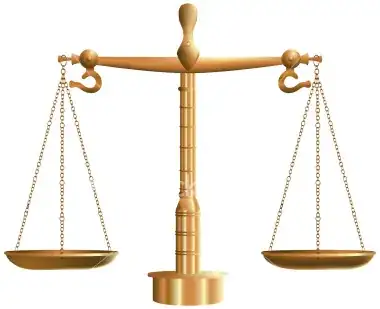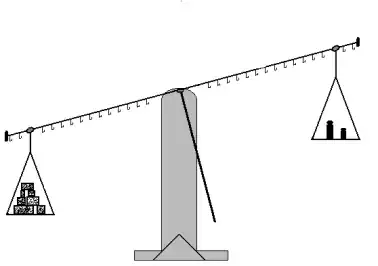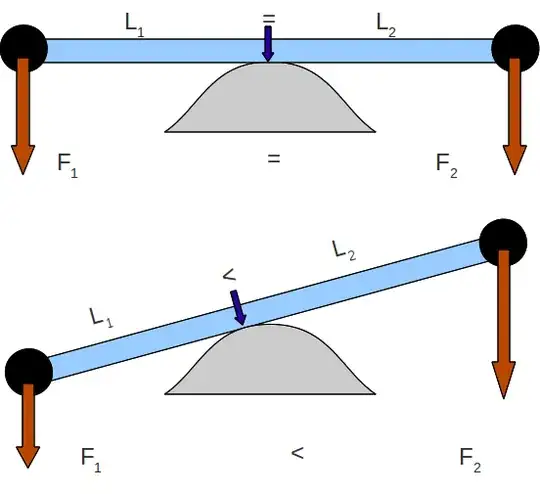Actually with the lever sticking up above the balance scale shown; balance axis point; it adds gravitational weight to whichever side is initially positioned downward, and also since this side is down, it should weigh more being closer to the ground... and should tend to keep this side down... However is doesn't...
If you put a weight, on some point of a wheel... to make it balance; you put an identical weight at an identical point equal and opposite... Spinning the wheel at high rpm will tell you quickly, if you did right. Then if idle, it should sit still, in any upright position...
If two identical boats were tied together with a rope and were sailing parallel, in a parallel steady wind, in friction-less water and etc... With one boat ahead, and off to the side; they... would maintain their positions and the friction-less rope is meaningless.
I don't really know the answer... but you might align the scale north & south; then again east and west; to see if there is a difference due to Earth's centrifugal effect? It seems to keep the oceans fairly balanced, (disregarding the moon.)
If it is true that matter has "matter waves"; they may be equaling out repelling against the ground... Whereas with the large heavy wheel above mentioned, this effect would probably be negated...?
If this experiment were laid upon a flat horizontal plane... and different forces were applied equally like the sail boats... I have an idea the results would be: the mechanism would hold still, wherever positioned; with similar circumstances.



